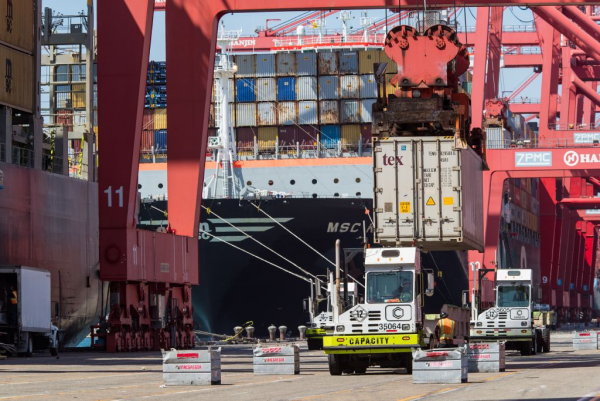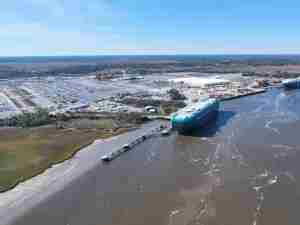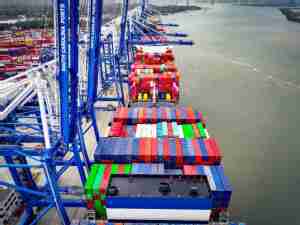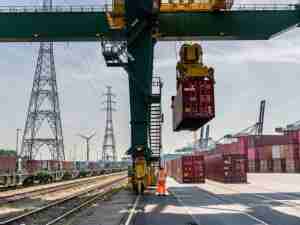Cap-and-trade funds electric vehicle demonstration
As part of its commitment to transition to zero-emissions operations, the Port of Long Beach will use a $5.3 million grant from the California Air Resources Board (CARB) to deploy hydrogen- and electric-powered cargo-handling equipment at two shipping terminals.

The demonstration will include three cargo-moving vehicles known as “top handlers” with never-before-tested battery-electric systems. The project will also feature a unique, head-to-head comparison of hydrogen fuel cell vs. battery-electric technology in yard trucks. In total, five vehicles will be demonstrated: two battery-electric top handlers at SSA Marine’s Pacific Container Terminal at Pier J; and one fuel cell yard tractor, one battery-electric top handler and one battery-electric yard tractor at Long Beach Container Terminal at Pier E.
“The progress we’ve made in reducing pollution is a model for seaports everywhere, with diesel emissions alone down almost 90 percent since we adopted the Clean Air Action Plan in 2005,” said Harbor Commission President Lou Anne Bynum. “Still, we are not satisfied. This equipment will further contribute to a cleaner environment for our neighboring communities.”
“Our partnerships with the California Air Resources Board and other agencies provide crucial funding for these vital demonstration projects as we work to create a zero-emissions seaport,” said Mario Cordero, Port of Long Beach Executive Director.
The equipment is expected to be put into use to begin the demonstration next year. As part of the project, information about the demonstration will also be integrated into the coursework at the Port-sponsored Academy of Global Logistics at Cabrillo High School to support education and workforce development for new port technologies.
The Port of Long Beach is one of the world’s premier seaports, a gateway for trans-Pacific trade and a trailblazer in goods movement and environmental stewardship. With 175 shipping lines connecting Long Beach to 217 seaports, the Port handles $180 billion in trade annually, supporting hundreds of thousands of Southern California jobs.










